Are you looking for the best WordPress dynamic content plugin?
Dynamic content can make your web pages and content a lot more engaging for your visitors. Whether you want to display personalized messages or create conditional content based on user behavior, dynamic content plugins make it easy to add these features without code.
In this article, we will show you the best WordPress dynamic content plugins to improve your website’s interactivity and user experience.
What Is a Dynamic Content Plugin?
A dynamic content plugin is a type of plugin that helps you change and update your WordPress website’s content automatically.
Unlike static content that stays the same, dynamic content can adapt based on different conditions. This helps create a more personalized and interactive user experience.
There are various types of content you can consider dynamic. Here are some examples:
- Conditional content – Show content based on factors like user role, login status, or where users come from.
- Personalization – Display content based on what kind of user or user group is reading it.
- Dynamic form fields – Create forms with fields that only appear based on the user input or choices.
- User behavior tracking – Track user actions and adjust content based on people’s behavior, preferences, or engagement history.
In summary, dynamic content plugins make it easy to create a more engaging WordPress website without coding skills.
Let’s now take a look at the best WordPress dynamic content plugins on the market. Each plugin that is in this list has a different dynamic content functionality. We recommend going through them one by one and finding the one that works best for you.
1. SeedProd (Dynamic Landing Pages)
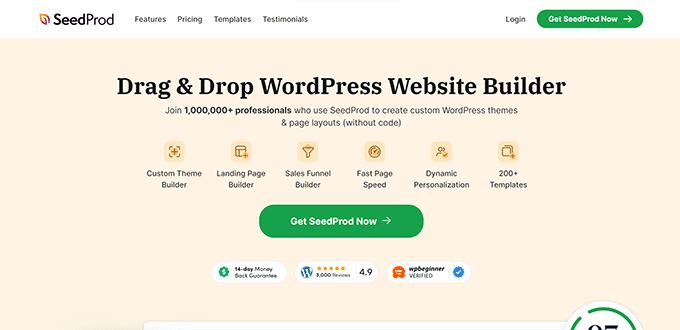
If you are looking to create dynamic pages on your website, then you should check out SeedProd. As the best WordPress page builder plugin, it allows you to insert dynamic text into your web pages and make your content more personalized.
SeedProd gives you two ways to add dynamic content. One of them is the Date Time format, which is perfect for ongoing sales.
For example, you might use a headline, “Our sale ends [Dynamic Text: Today]” on your landing page. The dynamic text code will change to the current day, saying something like, “Our sale ends Saturday,” based on when the user sees it.

Another way is the Query Parameter, which can adapt your web page content based on certain keywords.
For instance, if you are creating a landing page for a search ad targeting users in different regions, then you can use the Query Parameter to dynamically adjust your headline.
This way, the text displayed will vary based on the user’s location and depend on the location-based keyword they clicked on in the ad.

For more information, please see our SeedProd review.
Pros:
- Adding dynamic text to your content can be done easily in a few clicks.
- The Query Parameter feature makes it easy to personalize content based on the keywords you are targeting.
- The page builder is easy to use, with a flexible drag-and-drop feature to edit your WordPress theme.
- 300+ beautiful theme and landing page templates are available.
- There are 90+ built-in and third-party block and widget options to modify your pages.
Cons:
- You need a Pro or Elite plan to use the dynamic content feature.
Why we chose SeedProd: When it comes to dynamic content, SeedProd stands out among all page builders and Gutenberg editor alternatives. Out of the box, it provides a user-friendly experience for not only adding dynamic text but also creating a good-looking website.
2. OptinMonster (Personalized Popups)
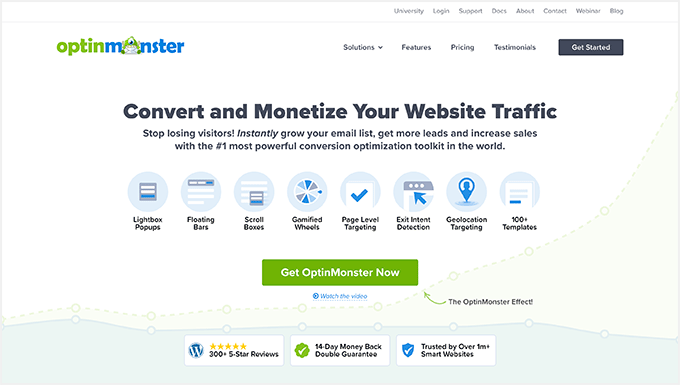
If you are looking to make your marketing campaigns more dynamic, then OptinMonster is an excellent option. This top lead-generation tool offers a Smart Tag feature to personalize your popup campaigns and increase your chances of conversions.
For example, you can use the Customer Journey tag to tailor your messaging.
Let’s say a user hasn’t purchased a product even though they’ve been in your online store for a while. You can use the Time on Site Smart Tag in your popup’s copy and get visitors to take action.
Something like, ‘You’ve been here for the past {{time_on_site}}. Thanks for sticking around! Here’s a coupon code to make your next purchase even better.’
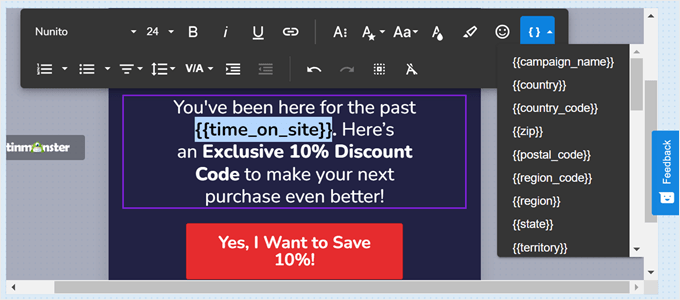
Some other examples of OptinMonster Smart Tags include the visitor’s name, location, time, referring URL, and custom tags.
Additionally, you can control when the popups automatically appear on your web pages using OptinMonster’s Display Rules feature. This way, the pop-ups will only be visible if the user meets certain conditions, which can make your campaign less intrusive.
Feel free to display multiple rules using the different targeting options. You can make the popups appear based on time delay, distance scrolled, exit intent, geo-location, and many more criteria.
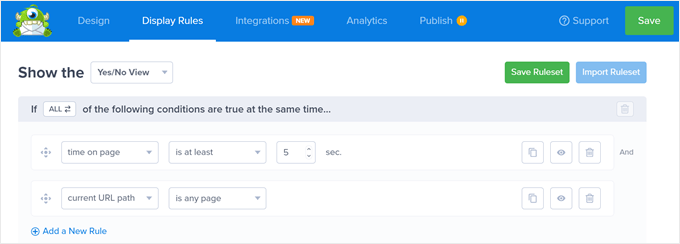
For more details, you can see our complete OptinMonster review.
Pros:
- Many different types of Smart Tags are available to add dynamic content to your WordPress popups.
- You can set multiple display rules for a popup based on simple conditions like time delay or advanced ones like if the visitor has viewed a specific URL path.
- You can use personalization-based campaigns to target users based on who they are, when they visit your website, if they are returning visitors, and more.
- Plenty of campaign templates are available, ranging from seasonal and goal-based to industry-specific ones.
Cons:
Why we chose OptinMonster: If you need a powerful platform to optimize your marketing campaigns, then OptinMonster is your best choice. While it’s not free, it’s more than just a dynamic content plugin. It also lets you create personalized and targeted campaigns for better conversions.
3. If-So (Dynamic Pages and Posts)
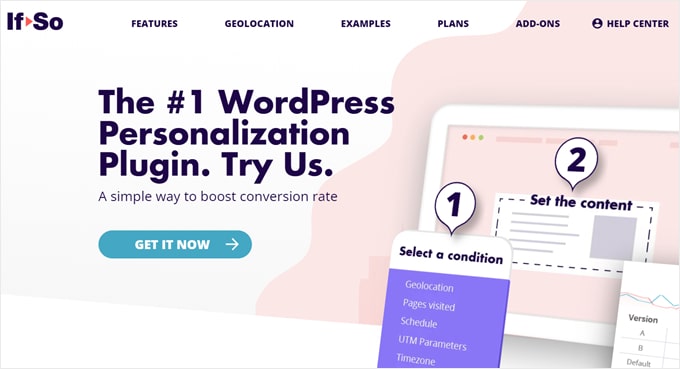
The If-So plugin is ideal for showing dynamic text content on your WordPress pages or posts. It lets you set up multiple variants of the same page or post, and the visitor will see one of them if they meet the conditions you’ve configured.
There are many conditions you can use to trigger the page or post variant. For example, if you use the free If-So plugin, then you can make the page or post appear based on the visitor’s device, user behavior, date and time, or IP address.
Paid license users will get access to more options, such as user role, advertising platform, page URL, and many more.

If-So also has Dynamic Keyword Insertion Shortcodes. These are shortcodes you can use within the plugin settings or the WordPress editor to make your content more tailored to the user.
For example, let’s say you are promoting a product on your homepage, and you want your headline to say that the item is popular in a certain region. You can use the geolocation keyword shortcode and write something like, ‘Users in [country] love this product!’

Pros:
- If you are looking for a free and feature-rich dynamic content plugin for your pages and posts, then If-So is a good option.
- Plenty of Dynamic Keyword Insertion Shortcodes are available to make your content more adaptable to user behaviors.
- There are many free add-ons to extend the plugin’s functionality.
- You can segment users into audiences based on the dynamic version displayed to them, which can be helpful to continue tailoring your content to specific user groups.
Cons:
- The interface is not very user-friendly as it’s similar to the WordPress classic editor ( it doesn’t allow you to preview the content).
Why we chose If-So: As a WordPress dynamic content plugin, If-So is pretty simple to use but offers plenty of features out of the box. Its free version is also great for WordPress bloggers or small businesses that are just trying out dynamic content for the first time.
4. FunnelKit (Dynamic WooCommerce Content)
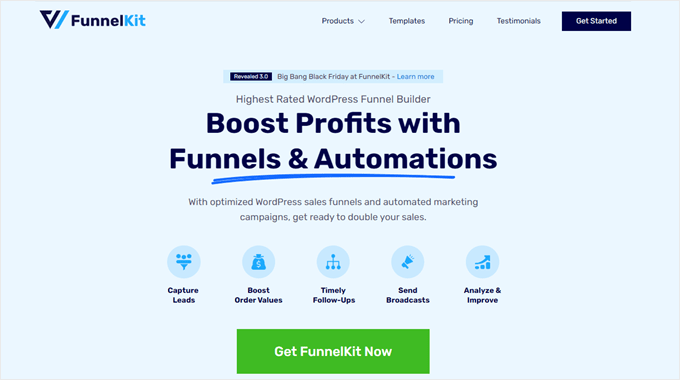
If you want to improve your eCommerce store with dynamic content, then look no further than FunnelKit. It’s a sales funnel plugin that can optimize the customer journey with personalized content to increase your sales and profits.
Take the Order Bump feature as an example. It lets you show a relevant upsell product with the customer’s purchase during the checkout stage. You can set up different conditional logic rules so that the offer is targeted to the user’s behavior.
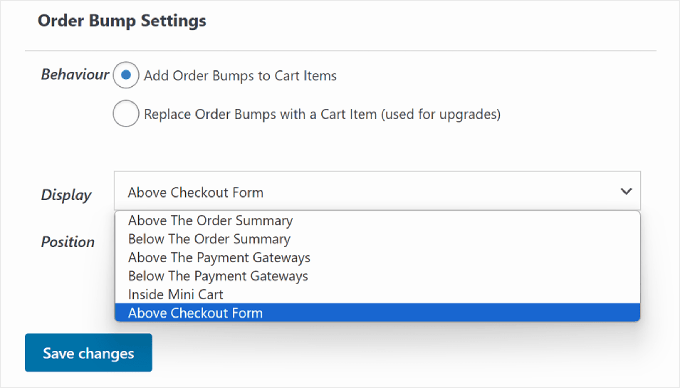
The Dynamic Offer Path takes this feature a step further. It lets you design a customer journey that shows multiple different upsell offers during the checkout stage.
For example, if the customer rejects your first upsell item, then you can display a different one instead. As a result, you can maximize the chances of them adding more products to their cart and increasing the average order value.
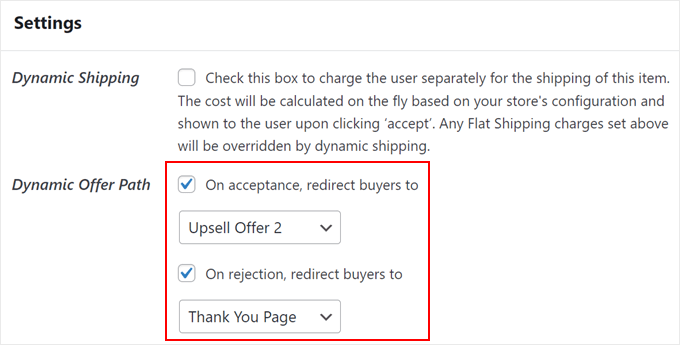
Pros:
- The interface is easy to use, making it simple to set up dynamic content features like Order Bump and Dynamic Offer Path.
- You can set up A/B tests for your funnels and checkout pages to see what works best for your customers.
- Encourage more purchases by using the Smart Reward System.
- Analyze your store performance with a user-friendly stats dashboard.
- Use FunnelKit Automations to optimize your shopping journey further, recover abandoned carts, offer exclusive coupon codes, and so on.
Cons:
- The Dynamic Offer and Order Bump features are not available in the Basic plan.
- The customer support is more limited compared to other plugins on this list.
Why we chose FunnelKit: If you have a WooCommerce store and want a tool that helps you automate promotions and boost sales, then FunnelKit is just what you need. It’s beginner-friendly with an easy-to-use interface, so you won’t feel overwhelmed using it.
5. WPForms (Dynamic Forms)
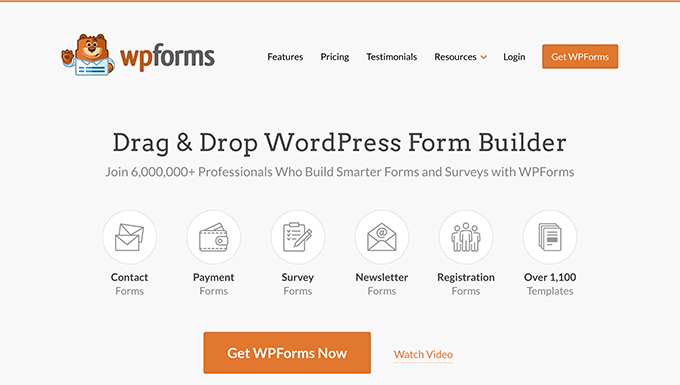
WPForms is the best WordPress form builder plugin and has a lot of dynamic content features. They can help make your forms more interactive and easier to fill out, which can increase your form completion rate.
For example, WPForms has a conditional logic functionality to make form fields visible in real time, depending on the user input and choices.
This can be useful for use cases like a new hire onboarding survey. If the user gives a low rating for their onboarding experience, then you can make the questions focus on areas that need improvement to gather specific feedback.

Also, you can speed up form filling for users by auto-filling fields. You can use Smart Tags to pre-fill fields with information like the user’s name or email address. This way, form completion is quicker, and there’s less chance of mistakes.
Alternatively, you could use the Dynamic Choices feature to automatically pull field options from your posts, pages, taxonomies, or custom post types. Then, you won’t have to create these choices manually.
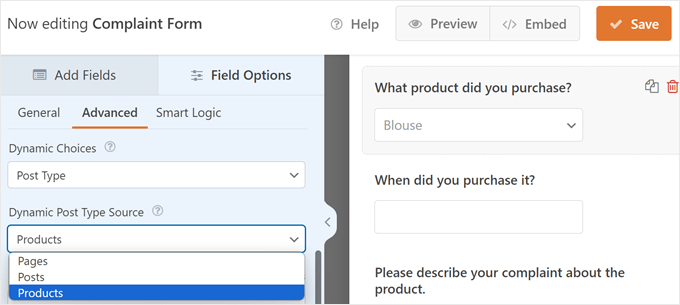
For more details, you can see our complete WPForms review.
Pros:
- The form builder and dynamic content features are easy to use.
- You can customize the conditional logic feature using multiple rules.
- 1200+ form templates are available, with various field types to customize your forms.
- Built-in add-ons let you make your forms more engaging, such as geo-location for form autocompletion and user journey to track visitors’ actions before filling out the form.
- It is compatible with many major WordPress plugins.
- WPForms is easy to embed on your pages and posts using a shortcode or a WordPress block.
Cons:
Why we chose WPForms: Overall, WPForms is the best WordPress dynamic content plugin for creating forms. Besides having great dynamic content features, the drag-and-drop builder is also easy to use, making it excellent for beginners.
6. Advanced Custom Fields (Dynamic Fields and Taxonomies)
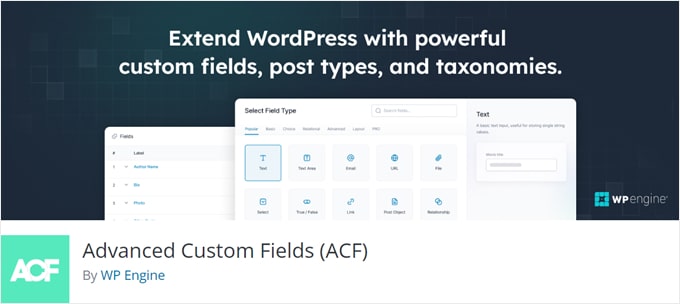
Advanced Custom Fields (ACF) is a plugin from the team behind WP Engine. You can use it to create custom fields, custom post types, and custom taxonomies for the WordPress backend, which you can then use to insert dynamic content.
Let’s say you run a WordPress travel blog, and you want to showcase your hotel recommendations differently from a standard page or post. You can use ACF to create custom content and taxonomy types for this purpose.
Or, you might have a WooCommerce website, and certain products require additional information like special features, warranty details, or unique specifications to be displayed. You can create a custom field for those product pages using ACF.

One thing to note is that compared to other plugins on the list, ACF is likely the most advanced. Many developers use it to make WordPress behave according to their needs.
Pros:
- 30+ field types are available to choose from.
- It has powerful advanced features in the Pro version, like the Repeater field, ACF blocks, Clone fields, and Options page to create custom admin pages.
- If you need help, then you can read its comprehensive documentation for more information.
Cons:
- While it’s easier to use than writing code, some beginners may find this plugin overwhelming at first due to how advanced and developer-oriented it is.
Why we chose Advanced Custom Fields: ACF is a go-to choice for users and developers looking for a high level of customization to display dynamic content.
7. Otter Blocks (Dynamic Content and Images)
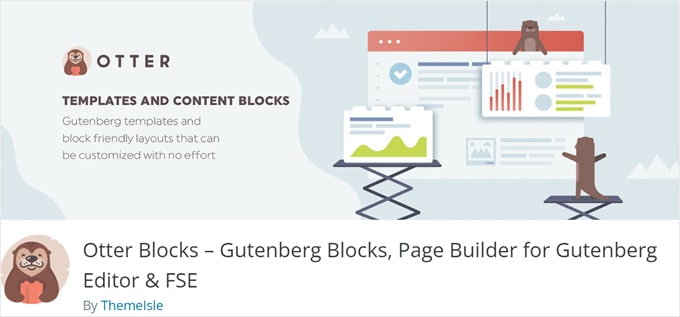
Otter Blocks is a Gutenberg block plugin from the team behind ThemeIsle. It has built-in functionality to add dynamic content for various data, such as information about your blog post, website, users, and more. Plus, there is a free version of the plugin.
The plugin is pretty straightforward to use. After installing it, you can type ‘%’ into the block editor to select a dynamic value to add to your content.
The types of dynamic value data available for free plugin users are quite basic, including the current date, post title, author name, and logged-in user name. We recommend upgrading to the paid version of Otter Blocks for more options, such as URL parameters and country.

What’s great about Otter Blocks is you can create dynamic images, too.
This may be useful if you want to display a testimonial written by one of your users. You can use a dynamic author image on your page so that whenever the user changes their picture, the content will also adjust.
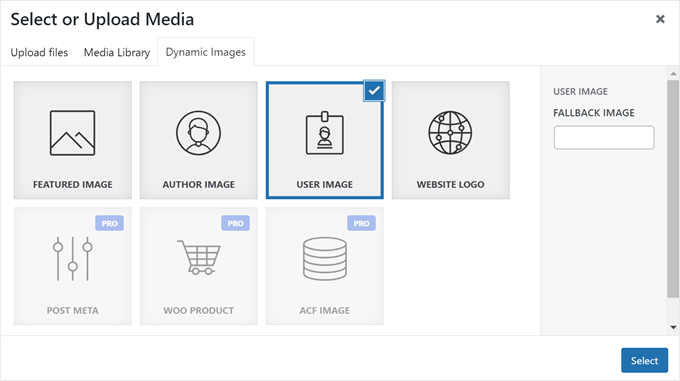
Pros:
- Everything is easily accessible from the block editor.
- You can use dynamic images for content where visuals change often.
- Besides dynamic content features, you will also get more Gutenberg blocks to enhance your page or post content.
Cons:
- Compared to other dynamic content plugins on the list, it’s not the most powerful out of the box.
Why we chose Otter Blocks: Otter Blocks is a simple dynamic content plugin, but its ease of use and dynamic image feature make it worth recommending.
8. TrustPulse (Dynamic Social Proof)

TrustPulse is a social proof plugin for WordPress with dynamic content functionality. Essentially, it can show real-time notifications whenever someone buys something on your website.
TrustPulse has a Smart Tag feature similar to OptinMonster. It allows you to customize your push notifications based on what was purchased and where the customer is from.
This lets potential customers see real people making purchases, making them feel more confident about taking action and trusting your business.

If you use WooCommerce and have many different products, then you don’t have to worry about making unique social proof notifications for each item. TrustPulse has been integrated with the WooCommerce Rest API to capture new order notifications automatically.
Besides that, TrustPulse can also show the most popular visitor activity as social proof, such as ‘1000 users bought this product in the last 7 days.’ This way, users see how in-demand a product is, which can trigger FOMO for them to buy it.
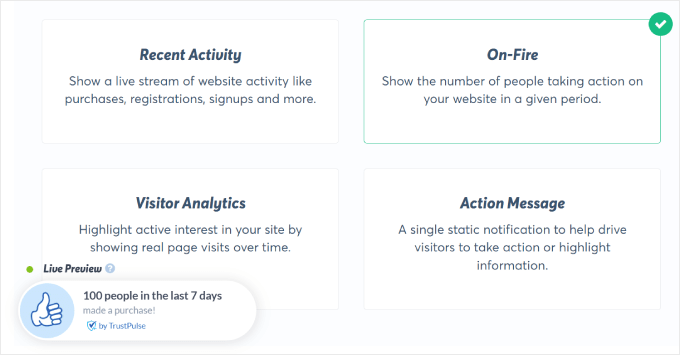
For more information, please see our TrustPulse review.
Pros:
- The real-time tracking lets you show live and verified customer actions as social proof.
- Besides recent and popular activity campaign types, you can show what pages are getting the most visits to increase user interest in your site.
- You can customize the notification widget’s appearance to suit your branding.
- It’s possible to customize the display rules to determine the frequency and location of the notifications.
- The tool is compatible with popular software like Zapier and Google Analytics.
- It has a free version, which includes up to 500 sessions.
Cons:
- Unless you buy the Growth plan, you cannot remove the TrustPulse branding from your notifications.
Why we chose TrustPulse: TrustPulse is one of the best ways to leverage dynamic and personalized content on your website. With a few clicks, you can create live notifications that make your business look more trustworthy to potential customers.
9. Thrive Quiz Builder (Dynamic Quizzes)

Thrive Quiz Builder is a WordPress dynamic content plugin that lets you create interactive quizzes on your website.
The Dynamic Content feature is available when you are editing the results of a WordPress quiz. You can set multiple results pages, each one with different content, and have them appear depending on the user’s answers.

The Thrive visual editor also includes a Conditional Display setting. It lets you create multiple versions of the same page and configure different display rules for each one.
This may be useful if you want the quiz to appear differently to certain users, like if they are a guest or a logged-in member.

Thrive Quiz Builder is also a useful tool if you want to personalize your user signup and registration processes based on the person’s information. You can also use Thrive Quiz Builder to tailor product recommendations to the potential customer’s tastes.
For more information, just see our Thrive Quiz Builder review.
Pros:
- The drag-and-drop quiz builder makes editing dynamic content easy.
- You can create up to 25 results page variants, which is pretty high.
- It’s possible to duplicate a results page variant and use the same structure for a different version.
- You can A/B test the results pages, which is useful to see which quiz is the most effective.
- Adding the quiz to your web pages is easy using a handy shortcode.
Cons:
- The dynamic content feature is not available for the survey quiz type.
- There is no free plugin version.
Why we chose Thrive Quiz Builder: With this quiz builder plugin’s customization and dynamic content features, you can create quizzes that match your exact requirements.
What Is the Best WordPress Dynamic Content Plugin?
Based on our research, SeedProd is the best WordPress dynamic content plugin for its beginner-friendliness. This page builder lets you insert dynamic text into your landing pages using its drag-and-drop editor.
But, we realize that the dynamic content plugins listed here serve a wide range of purposes. To help you decide which one is best for your needs, you can check out our recap below:
- SeedProd – The best WordPress dynamic content plugin for landing pages.
- OptinMonster – The best WordPress dynamic content plugin for online campaigns and conversions.
- WPForms – The best WordPress form builder with dynamic content.
- FunnelKit – The best dynamic content plugin to improve your WooCommerce store.
- If-So – The best freemium WordPress dynamic content plugin.
FAQs About WordPress Dynamic Content Plugins
Let’s answer some frequently asked questions about using dynamic content in WordPress.
Does WordPress allow dynamic content?
Yes, WordPress allows dynamic content out of the box, but it’s limited to basic dynamic elements like the post date, author, and category.
You can extend this functionality using plugins like SeedProd, If-So, or Advanced Custom Fields to easily use dynamic elements in your pages and posts without coding.
Is WordPress good for a dynamic website?
WordPress is well-suited for dynamic websites. Its extensive plugin ecosystem provides tools to add dynamic content, create personalized user experiences, and optimize your site for user engagement.
Does dynamic content hurt SEO?
When used correctly, dynamic content does not necessarily hurt SEO. In fact, dynamic content can enhance user engagement and provide a more personalized experience, positively impacting your site’s SEO.
Just make sure that search engines can crawl and index the dynamic content and avoid practices that could potentially lead to duplicate content issues.
Best WordPress Guides for Using Dynamic Content
If you liked this article, then please subscribe to our YouTube Channel for WordPress video tutorials. You can also find us on Twitter and Facebook.
Leave A Comment
You must be logged in to post a comment.